In 2025, the financial environment is changing fast, and Canadian entrepreneurs have to be prepared for it. Although the economy has been resilient after the pandemic, small business owners continue to struggle to get reliable funding. Increasing operational expenses, supply chain fluctuations, and changing consumer behaviour are all reasons why external capital is not only helpful but, in many cases, necessary.
Funding for small businesses is not merely a capital injection; it is a lifeline that drives innovation, facilitates employment, and allows long-term expansion. As a new business or an established company looking to expand, you need to know your options when it comes to small business funding in Canada to remain competitive and sustainable.
Types of Small Business Funding Available in Canada

The type of funding you select is based on your industry, revenue model, and growth stage. The following is a breakdown of the most popular funding options that are available to Canadian small businesses:
Working Capital Loans
These loans are meant to cover the daily running expenses of a business. They are therefore suitable for companies that have a consistent revenue but a short-term cash flow shortage. They are frequently applied to payroll, inventory, or seasonal requirements.
Merchant Cash Advances (MCAs)
MCAs are suitable for businesses that have variable sales volumes. Rather than paying a set amount each month, you pay a percentage of your daily credit card sales, which is flexible when income is uneven.
Equipment Financing
This financing enables businesses to buy or rent equipment and pay the cost over a period. It is an excellent choice for construction, manufacturing, or healthcare companies that want to expand.
Business Lines of Credit
This revolving credit enables you to borrow as much as you require, when you need. It is a cost-effective way of financing unpredictable expenses as interest is only charged on the amount used.
Government Grants and Subsidies
Grants don’t require repayment, making them highly attractive. Nevertheless, they usually have stringent eligibility requirements and a lengthy application procedure.
Revenue-Based Financing
This new model links repayments to your monthly revenue. When sales slacken, your payments are adjusted, providing relief in bad times.
Crowdfunding and Peer-to-Peer Lending
These options access public or private investors who have faith in your vision. Although they are not conventional, they provide a path to startups or new product introductions.
Invoice Factoring
Factoring companies can also advance a percentage of your invoices, which can help your business keep its cash flow healthy in case your business has problems with late payments by clients.
From general business funding for small businesses to more specific options such as equipment loans, the trick is to know what suits your objectives.
Government Grants & Subsidies for Small Businesses in Canada
Grants are an excellent source of funding for small businesses without incurring debts. Competition may be intense, but several government programs in Canada offer non-repayable assistance:
- Canada Small Business Financing Program (CSBFP): A loan program supported by the government to enable small businesses to purchase equipment or to enhance cash flow.
- Industrial Research Assistance Program (IRAP): It is suitable for innovative companies that invest in R&D and provide financial and advisory services.
- Canada Job Grant: Cover training expenses to enable your team to upskill and increase productivity.
- Export Development Canada (EDC): Provides capital and insurance to companies that are going global.
- Regional Development Agencies (RDAs): Offer province- or territory-specific grants based on where you live.
- Women Entrepreneurship Strategy (WES): Funds and mentors women entrepreneurs.
Such programs can finance businesses without straining your balance sheet. These grants are a stepping stone to growth and innovation for many companies.
Private Funding Sources: Alternative Lenders, VCs, and FinTech Solutions

With banks becoming more stringent in their lending criteria, many business owners have turned to private funding sources. Alternative lenders, especially, have quicker turnaround times and fewer paperwork requirements, which is ideal for companies that require quick business funding.
FinTech platforms are now offering real-time underwriting, same-day approvals, and custom offers based on business health, not just credit scores. Although venture capital (VC) and angel investment can be used by startups that have high growth potential, they are less common for ordinary small businesses.
Capital Advance is a partner that provides customized solutions in funding for small businesses in Canada, helping entrepreneurs access capital when they need it most. Alternative lenders bridge the gaps that traditional banks leave with industry-specific knowledge and efficient approvals.
How to Finance Your Business Without Traditional Bank Loans
Not all business owners desire or are eligible to take a bank loan. The silver lining is that there are several alternatives to consider when you are asking yourself how to finance your business in the current market.
Merchant cash advances, equipment leasing, and business credit cards are all flexible alternatives to bank loans. The tools are handy to service providers, retailers, and seasonal businesses where revenue may fluctuate.
Peer-to-peer lending and crowdfunding have also become more common, allowing companies to get finances through supporters or micro-investors on the internet. Small business grants or revenue-sharing agreements may be more suitable for you if you do not want to use debt.
Top Mistakes to Avoid When Applying for Business Funding
Even the most promising business may be rejected because of the mistakes that can be easily avoided. The most typical errors to avoid are as follows:
- Filing incomplete or outdated financial records, including old tax returns or missing bank statements.
- Applying to the wrong funding provider, such as visiting a traditional bank when your business would be better suited to an alternative lender.
- Underrating the significance of credit history, personal and business.
- Not being able to specify your purpose of funding, which makes lenders doubt your business plan or your ability to repay.
- Disregarding smaller or alternative solutions, such as funding for small companies via MCAs or equipment loans.
- Failing to prepare follow-up questions may slow down or have the process cancelled altogether.
These are some of the pitfalls that you should avoid as much as possible to maximize your chances of success and to have access to the best funding for small businesses that currently exist in the market.
Eligibility Requirements for Small Business Funding in Canada
It is important to know what most lenders and programs seek before applying. Although each source of funding has its own specifications, the following are the general eligibility criteria in Canada:
- Minimum time in business, usually 6 to 12 months of business history.
- Depending on the type of funding, the business or personal credit score is considered.
- Canadian registration and operating license, which proves your legitimacy.
- Type of industry and level of risk: Some industries are flagged as high risk.
- Current financials include profit and loss statements, bank statements, and tax returns.
By fulfilling these requirements, you will have access to a wider variety of small business funding in Canada, including banks, fintechs, and governmental organizations.
Step-by-Step: How to Get Funding for Your Business in 2025
It can be made easier by knowing where to begin. This is a simple, practical roadmap:
- Evaluate your financing objectives: Do you require expansion capital, cash flow capital, or equipment capital?
- Select your funding type: Loans, advances, grants, or non-debt options.
- Get your papers ready: Clean financial records, bank statements, and business registration.
- Identify potential providers: Research potential providers that match your needs, such as Capital Advance or provincial grant programs.
- Online or in person: Fill in complete and correct applications with clear purposes of funding.
- Interact with the provider: Be prepared to answer follow-up questions or provide additional documents promptly.
- Accept your offer: Review terms carefully before signing.
This systematic procedure enhances your likelihood of getting timely funding for your small business in Canada- just when you need it.
Business Funding Needs for Companies in Different Industries

Financial cycles are different in every industry, and financing requirements may differ radically. For example:
- Retail companies usually need seasonal working capital to finance inventory during peak seasons.
- Construction contractors look for funding for small companies to purchase heavy machinery or handle upfront project costs.
- Restaurants often use equipment leasing and renovation loans to remain competitive.
- Law firms, consultancies, and clinics are professional services that might need liquidity to cover receivables and pay operating costs.
Regardless of your niche, it is important to match your source of funding with your cash flow cycle. Capital Advance has been operating in various industries to ensure that solutions are customized to suit particular business models.
Tips to Improve Your Chances of Securing Business Funding
Good products and loyal customers are not enough to keep you on track with your funding efforts when you have poor financial planning. The following is how to increase approval chances:
First, establish a good business credit history. This involves keeping personal and business finances separate, operating your business bank account in all transactions, and paying suppliers and creditors promptly.
Second, keep proper and clean financial records. Cloud-based accounting software can help you easily provide real-time information about the health of your business, which lenders adore.
Third, do not apply for several loans simultaneously. It causes tough investigations, which may damage your credit. Instead, approach the appropriate source of funds with a good reason.
Lastly, be updated. Sign up for financial newsletters, network with funding advisors, and re-examine your options regularly. This will prepare you in case a new business funding opportunity for small businesses arises.
Final Thoughts: Preparing for Your Future Business Funding Needs
According to a 2021 Statistique Canada report, “Small and medium-sized businesses (SMEs) comprised 98.1% of all employer businesses in Canada.”
Funding is not only about addressing the current issues, but also about setting your business on the path to success.
A good relationship with your funding partners, such as Capital Advance, can make future applications easier and more successful. It is also prudent to ensure that you have a clean credit profile and that you update backup documents even when you are not actively applying.
In a rapidly changing financial landscape, preparation puts you at an advantage —and ensures that funding for small business is never out of reach when you need it. Contact us to learn more about small business funding.


